A highly versatile ingredient produced through the process of stewing and filtering tomato fruits, tomato puree is no doubt one of the most irreplaceable ingredients in practically any restaurant kitchen or home pantry, especially due to the fact that it is used in such a wide variety of recipes.
However, due to a lack of availability or certain other unforeseen circumstances and situations, one may require a suitable substitute be found for tomato puree so as to continue the preparation of whatever recipe was meant to originally contain said tomato puree.
The best tomato puree substitutes are crushed raw tomatoes, tomato sauce, tomato paste, or tomato juice. The best flavor substitutes for tomato puree are red wine vinegar, pumpkin puree, beet or carrot puree, or ajvar sauce. The best finished food product substitutes for tomato puree are pizza sauce or marinara sauce.
Is Tomato Puree the Same as Tomato Paste?
Despite the fact that tomato puree is the concentrated and strained form of stewed tomato plants, it is not in fact the same as tomato paste due to the fact that tomato paste is rather thick in consistency and far more akin to a spread like peanut butter than the more fluid tomato puree itself.
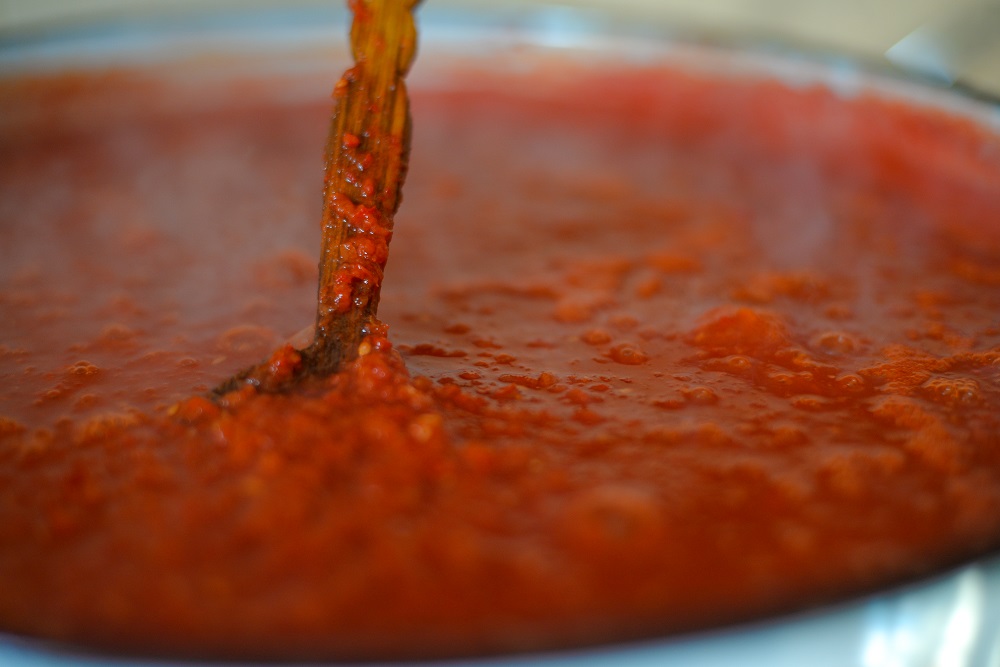
Tomato paste is generally reconstituted with such things like cream or water so as to achieve the desired consistency needed in the recipe, of which will also have the added benefit of diluting its otherwise rather intense flavor, a taste profile that possesses quite a few notes tomato puree does not normally present.
Is Tomato Puree the Same as Tomato Sauce?
Unlike the physical consistency and viscosity of tomato paste, tomato sauce on the other hand is distinctly more fluid than tomato puree, possessing more diluent compounds as well as more juice from the original fruit it is derived from, by extension also presenting a more diluted flavor profile.
The primary reason behind the use of tomato sauce instead of tomato puree is simply to use the tomato derived product in larger volumes, allowing it to be stretched further in such dishes like pasta and baked meats where tomato puree may be either too intense in taste or otherwise inconvenient to use in such large volumes.
Alternative Tomato Food Products
If the particular circumstances causing the need to substitute tomato puree are simply that of a lack of availability or similar things that do not directly necessitate the removal of any sort of tomato plant based product from the recipe, simply using an alternative tomato derived food product should prove more than adequate for the uses of the dish.
Fortunately, the vast majority of these tomato derived food products are just as readily available at any grocery store as tomato puree itself, and are otherwise likely already available in one’s own refrigerator or pantry.
Crushed Raw Tomatoes
For such things like sandwiches, salads or pizzas where the primary requirement of what would normally be tomato puree is simply its relatively sweet and tart flavor profile, simply using crushed fresh tomatoes is more than adequate enough to recreate much the same notes of taste without the use of tomato paste itself.
This has the added benefit of imparting higher levels of fiber and certain other vitamins into the consumer’s diet, of which is usually cooked and strained out of tomato puree during the process of manufacturing it.
It is best to use a slightly larger volume of crushed raw tomato than how much tomato puree would be used in the recipe, simply because of the less intense flavor involved in using raw tomato instead.
Tomato Sauce
Though the particular suitability of substituting tomato puree with tomato sauce may depend on what sort of brand that is being used, tomato sauce is nonetheless an otherwise excellent substitute to tomato puree both in terms of function as well as flavor, especially considering the fact that it is the closest possible replication of tomato puree itself in certain situations.
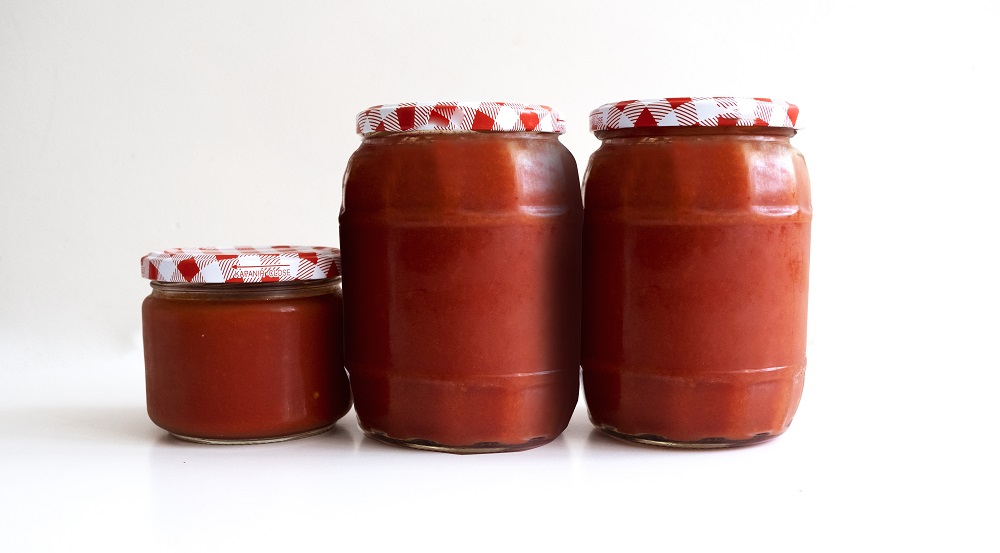
Prior to substituting tomato puree with tomato sauce, it is important for one to first taste test their particular chosen brand of tomato sauce so as to ensure that it does not clash with other ingredients and their subsequent flavor profiles that are present within the dish.
A caveat to using tomato sauce as a tomato puree substitute is its somewhat less viscous and thick consistency, necessitating that the tomato sauce be cooked or thickened in some way prior to being incorporated into the recipe so as to best replicate tomato puree’s viscosity and texture.
Tomato Paste
Another extremely close substitute to tomato puree is that of tomato paste, of which is produced in a similar manner to tomato sauce with the added process of dehydration and caramelization often being brought into its manufacturing process.
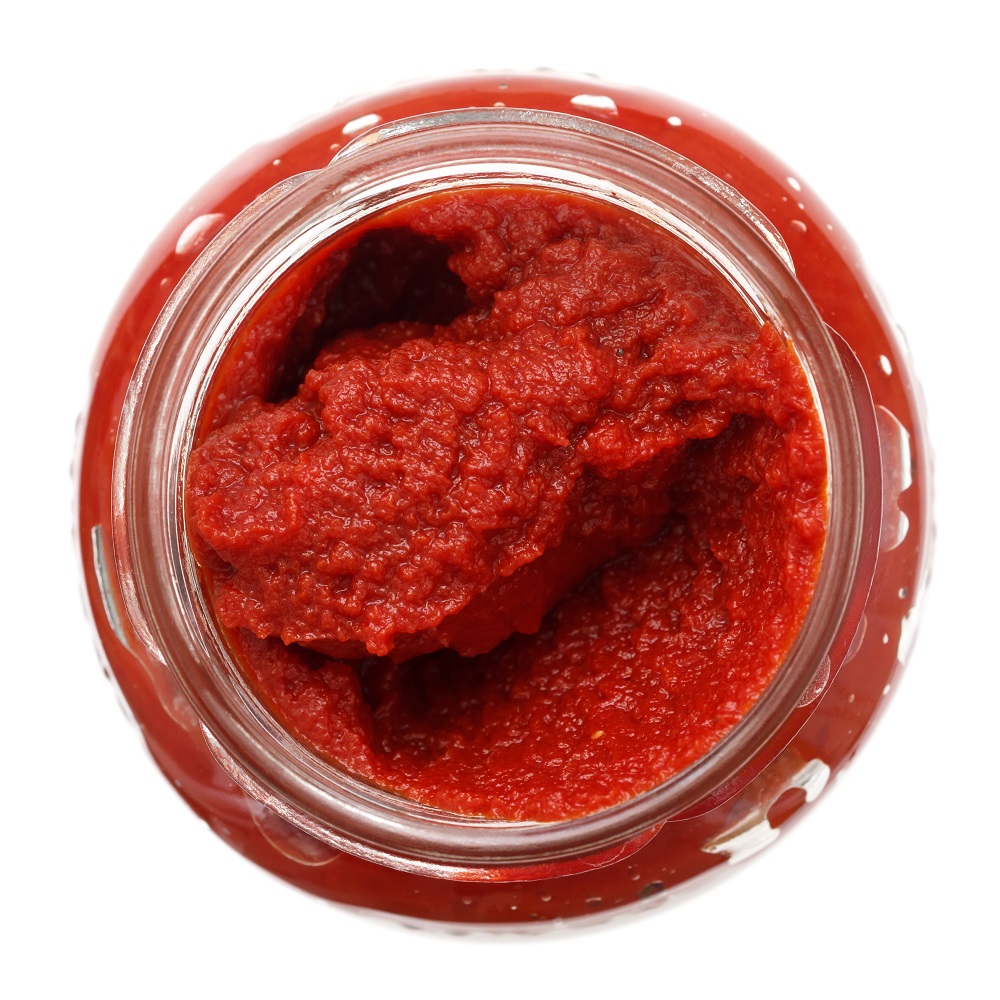
This has the intended effect of producing a rather thick and spreadable mixture with a far more intense and slightly acrid flavor than tomato puree, requiring some level of dilution be used so as to prevent the tomato paste from overpowering the entire flavor profile of the recipe.
This is not required, however, in the sort of food products or dishes that only require a distinctive tomato fruit flavor be used in its ingredient list, as tomato paste’s somewhat more cloying and powerful flavor may actually be even more complementary to certain recipes than tomato puree itself, such as in pasta sauces or baked goods.
Tomato Juice
Perhaps the least suitable substitute for tomato puree save in certain drinks or dessert recipes, tomato juice is another possible alternative tomato product capable of replacing tomato puree in terms of flavor and consistency if treated in the proper manner and with certain ingredients.
In such recipes like pasta dishes or certain baked goods that require a thicker consistency of tomato product, one may either simmer tomato juice so as to remove as much moisture from the juice as possible – thereby allowing it to reach a thicker consistency more similar to tomato puree’s own consistency.
If pressed for time, the use of food grade thickening agents or flour may also be used, though each comes with their own drawbacks that may bring the tomato juice further in texture and flavor from tomato puree instead.
It is also important to use unsweetened tomato juice not intended to be consumed as a beverage, as certain types of tomato juice such as the kind popular in Japanese cuisine may contain extra flavors and sugary additives that dilute or alter the juice’s otherwise tomato-ey flavor.
Flavor Substitutes for Tomato Puree
If, instead, the substitute for tomato puree must possess a similar enough flavor profile without actually being produced in any part from the fruit of the tomato plant, there are several albeit unconventional ingredients that are capable of acting in such a substitutional capacity.
However, it is important for one to temper their expectations, as the flavor of a tomato and its subsequent food products can be quite distinct – and as such, may also be quite difficult to replicate in their absolute entirety, even with products that possess similar notes of flavor in their taste profile.
Red Wine Vinegar
If the primary flavor required of tomato puree in a recipe is its sweet yet acidic body of taste, red wine vinegar or certain similar forms of vinegar derived from fruit products may be capable of replicating the same acidic bite, all with a variable level that may be tweaked depending on the needs of the recipe.
In recipes that require a weaker acidity be present than what would normally be found in a regular red wine vinegar product, one may simply dilute it with an equal part of water or -better yet- certain types of fruit juice, both of which will have the beneficial effect of bringing red wine vinegar’s flavor profile closer to that of tomato puree, especially in the latter’s case.
Pumpkin Puree
Significantly less commonly seen in stores and as such usually requiring that one makes it themselves, pumpkin puree can act as both a textural substitute as well as a somewhat suitable flavor replacement for tomato puree, especially in such things like pasta sauces or savory baked goods.
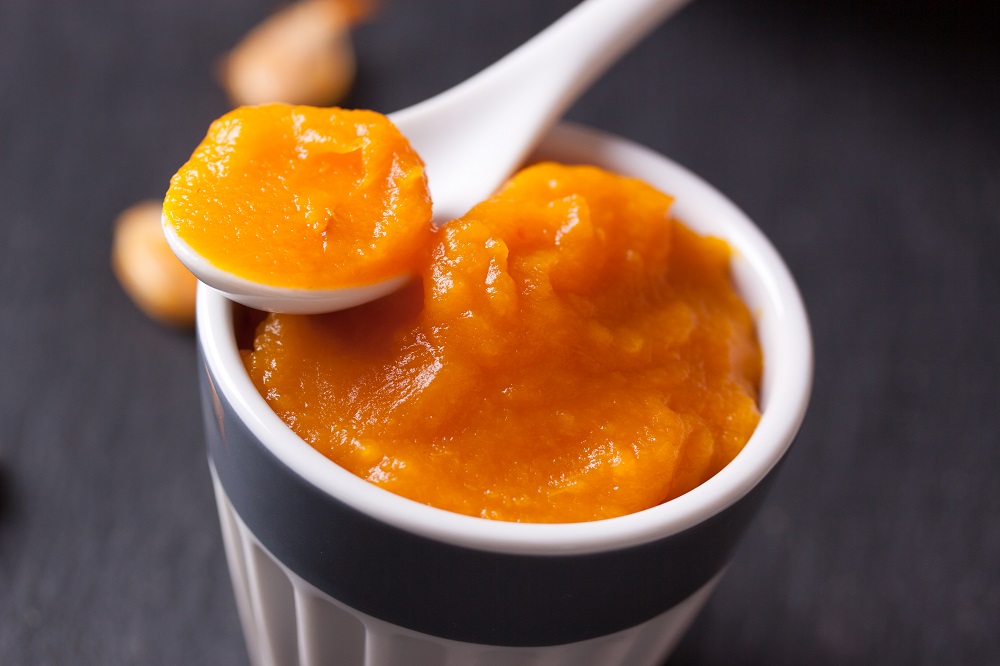
This is due to the fact that pumpkin, when seasoned appropriately, presents similarly fruity and ever so slightly acidic notes of flavor that are also seen in tomato derived food products, with tomato puree in particular being quite close in intensity and profile to pumpkin puree itself.
Beet and Carrot Puree
Not quite available as a commercially produced food product, nevertheless several differing recipes are available that incorporate this rather unusual mixture of two vegetables so as to act as an excellent tomato sauce or tomato puree substitute, with the beets acting as both a textural and visual substitute and the carrots lending their distinct flavor profile to help imitate the flavors found in tomato products.
This is perhaps the most labor intensive non-tomato flavor substitute for tomato puree, but pays in dividends in terms of the level of substitution it is capable of, being quite close in flavor and texture to tomato puree with very little drawbacks save for the time and energy required to make it.
Ajvar Sauce
Unlike the previous two flavor substitutes listed in this article, ajvar sauce is actually available for purchase in several stores, making it somewhat more convenient, in the event that one can manage to find it.
Ajvar sauce is produced through the cooking and processing of red bell peppers and eggplants prior to adding certain seasonings and spices that not only bring this excellent tomato puree substitute closer in appearance to tomato products, but also in flavor and texture.
As such, ajvar sauce is yet another potential tomato puree substitute that should be placed quite high on one’s list when shopping for possible ingredients to replace tomatoes in a recipe.
Finished Food Product Substitutes for Tomato Puree
In the event that one instead wishes to purchase a finished food product in order to act as a substitute to tomato puree as opposed to a single ingredient that may replicate its characteristics, various pre-prepared sauces that are regularly available in practically any grocery store may be used.
The vast majority of these sauces can, in fact, contain tomato fruit itself, however, and as such are not suitable if the primary goal of the chef choosing to substitute tomato puree is the removal of any traces of tomato in the recipe.
Pizza Sauce
Often coming in a variety of flavors and ingredient ratios that may or may not be suitable for whatever recipe tomato puree was originally intended to be added into, pizza sauce nevertheless may act as an absolute last second substitute for tomato puree, especially in the sort of recipes that also require some of the ingredients that may be present in most brands of pizza sauce.
A primary drawback to utilizing pre-made pizza sauce as a tomato puree substitute is the fact that it is usually less viscous in texture and often has a certain amount of sugar added into it so as to create a sweeter sauce that is meant to pair with other ingredients found on pizza.
As such, simply using the same thickening tactics one would use with regular tomato sauce should remedy this situation more than enough.
Marinara Sauce
Another form of tomato sauce usually incorporating such ingredients like herbs and aromatic vegetables, marinara sauce is originally intended to be used as a pasta sauce, but nonetheless can act as a tomato puree substitute in savory dishes that allow the extra notes of flavor that come with marinara sauce to be used.
Much like pizza sauce and other tomato derived food products, however, marinara sauce is rather thinner and chunkier in consistency than tomato puree, and as such if this particular characteristic is problematic, one may strain the marinara sauce or otherwise thicken it through the use of flour or the cooking methods of simmering.
References
1. Stevens M.A., Scott K.E. (1988) Analytical Methods for Tomato Products. In: Linskens HF., Jackson J.F. (eds) Analysis of Nonalcoholic Beverages. Modern Methods of Plant Analysis, vol 8. Springer, Berlin, Heidelberg. https://doi.org/10.1007/978-3-642-83343-4_8
2. “The Complete Book on on Tomato & Tomato Products Manufacturing (Cultivation & Processing)(2nd Revised Edition): Agro Based Small Scale Industries Projects, Business plan for tomato paste production, Cost of tomato processing plant, Food Processing & Agro Based Profitable Projects, food …” Niir Project Consultancy Services (2017)
3. Roy F. Guste (1995) “The Tomato Cookbook” Pelican Publishing Company ISBN 156554045X, 9781565540453



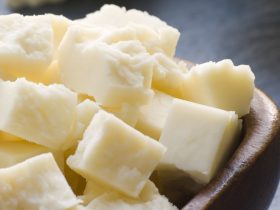

Hi, I'm Dom
Dom Eats was started to help other people fall in love with food. While cooking can feel intimidating, it doesn't have to be.